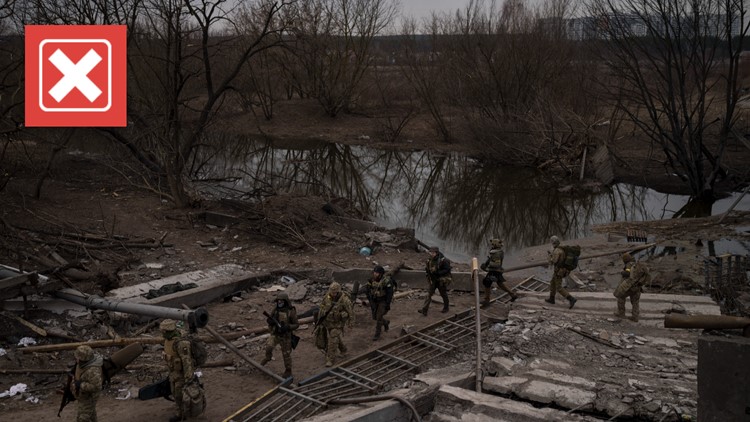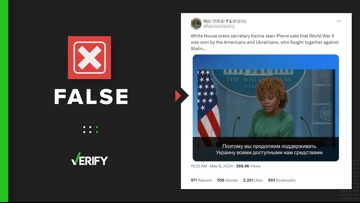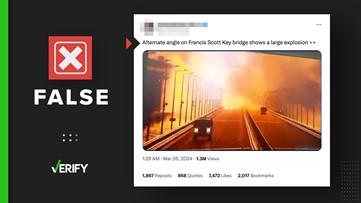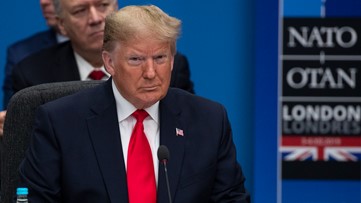Since Russia first began its military invasion of Ukraine on Feb. 24, several videos of Russian prisoners of war (POWs) have gone viral. The videos often show the POWs speaking out against Russia’s war in Ukraine, and some allegedly show them calling their mothers.
Videos and photos of Russian POWs have been shared to social media by both the Ukrainian government and Ukrainian media, a tactic the Ukrainian government defends by saying it helps the families of soldiers identify them. But in the replies of many of these photos and videos are people who claim that these images may be a violation of the Geneva Conventions. Malcolm Nance, a former U.S. intelligence official, wrote on Twitter: “Sharing photos of captured POWs is a violation of the Geneva Convention.” Jon B. Wolfsthal, a former National Security Council advisor, simply wrote beneath a video of Russian POWs a reporter shared: “Do not share photos of POWs.”
The Geneva Conventions are a set of treaties that set rules for how people not involved in war or no longer involved in war should be treated.
THE QUESTION
Do civilians sharing images of POWs in Ukraine violate the Geneva Conventions?
THE SOURCES
Geneva Convention Relative to the Treatment of Prisoners of War
Article 13 interpretation from British government and British Red Cross
Oren Gross, Irving Younger Professor of Law at University of Minnesota Law School
THE ANSWER
No, civilians sharing images of POWs in Ukraine don’t violate the Geneva Conventions. The Geneva Conventions do not apply to civilians, so individual social media users would not be held responsible for a Geneva Convention violation.
Images of prisoners of war publicly shared by a government or military may violate a Geneva Convention article that says prisoners cannot be subject to “humiliation” or “public curiosity.”
WHAT WE FOUND
Photos and videos of alleged Russian prisoners of war (POWs) have been posted or reposted to Twitter by journalists, Ukrainian government officials and civilians, and many of those posts have gone viral.
Many others have replied to these images with warnings that they violate the Geneva Conventions, specifically a protection for POWs against “public curiosity.” There is such a protection in the Geneva Conventions and it can pertain to images of POWs, but the Geneva Conventions only apply to governments and military forces. They do not apply to civilians.
“The short legal answer is civilian individuals are not a party to the Geneva Conventions and not obligated to follow them,” a spokesperson for the International Committee of the Red Cross, which bases its work on the Geneva Conventions, said. “But we encourage dignity and humanity beyond that.”
That’s because the Geneva Conventions are a series of treaties, which are agreements between states. Therefore, they apply specifically to states and armed groups, the International Justice Resource Center says.
Still, the Red Cross recommends civilian media avoid sharing identifiable images of prisoners of war.
“In general, the media should always resort to appropriate methods, such as blurring, pixelating or otherwise obscuring faces and name tags, altering voices or filming from a certain distance, in order to serve their function without disclosing the prisoners’ identities,” the Red Cross says.
How Ukraine government POW photos could violate Geneva Conventions
During the four Geneva Conventions, national governments wrote and signed treaties that established various rules of war. The third convention, in 1949, was the Geneva Convention Relative to the Treatment of Prisoners of War. Article 13 of that convention states, “Prisoners of war must at all times be protected, particularly against acts of violence or intimidation and against insults and public curiosity.”
While Article 13 doesn’t specifically mention photos or videos, the International Committee of the Red Cross, which maintains a database on every protection of the Geneva Conventions, states Article 13 includes photos and videos when applied to modern times.
Oren Gross, a professor at University of Minnesota Law School, said there’s no “hard and fast rule” on what amounts to humiliating, degrading or insulting imagery. The Red Cross has applied a broad interpretation, agreeing with an Article 13 interpretation by the United Kingdom and British Red Cross that said almost all identifiable images of POWs would violate Article 13.
“Any image of Prisoners of War (POWs) as identifiable individuals should normally be regarded as subjecting such individuals to public curiosity and should not be transmitted, published or broadcast,” the joint statement between the British government and national Red Cross said.
Amnesty International, a human rights advocacy organization, said that any public appearances, including within publicly shared photos or videos, puts POWs “at risk when they are returned to their home country, and also prove problematic for their families whilst they are detained.”
The Red Cross says that if it’s in the prisoner’s vital interest for their identity to be publicly revealed, such as a case where the POW is believed to be missing, then identifiable images of the prisoner may be revealed, “but only insofar as they respect the prisoner’s dignity.”
Gross said that if Ukraine is sharing these photos and videos solely to communicate to the prisoners’ families that they’re still alive, then they have a good argument that the use of the media does not violate the Geneva Conventions. But he said that defense is not airtight because the prisoners in the videos are speaking out against their own party, which might constitute another violation.
While Gross can’t say for sure that these images are violations of the Geneva Conventions, he said they “straddle extremely closely to the line of violation if not crossing it.”
But even if it is a violation of the Geneva Conventions, Ukraine’s action wouldn’t amount to war crimes. Gross said that although all Geneva Convention violations are violations of international law, many of them don’t amount to the level of war crimes — which are of a higher degree of severity.
He said that this violation would not be considered a war crime.













